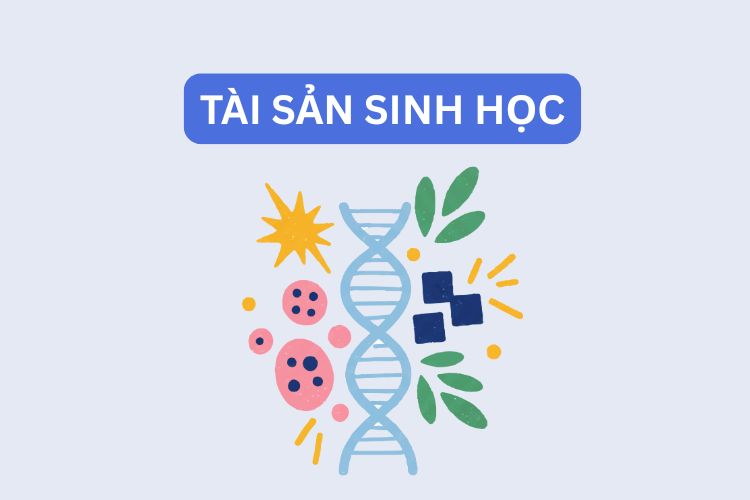Biological assets are a specialized concept in accounting and finance, particularly important for businesses operating in agriculture, forestry, and aquaculture. A clear understanding of the definition, classification, and recognition principles of biological assets not only helps businesses comply with accounting standards but also provides an accurate view of the true value of these assets.
1. What are Biological Assets?
Biological Assets are living animals and plants that an entity holds for use in the production process or for providing agricultural products.
According to International Accounting Standard (IAS) 41 – Agriculture and Vietnamese Accounting Standard (VAS) 05 – Investment Property (in some related cases), this definition focuses on the following characteristics:
- Living Animals/Plants: An essential element to be considered a biological asset.
- Capable of Biological Transformation: These assets can grow, degenerate, procreate, and produce agricultural produce.
- Controlled/Held by the Entity: The asset is controlled by the entity as a result of past transactions.
Example: A herd of dairy cows raised for milk is a biological asset. A eucalyptus forest planted for timber harvesting is also a biological asset.

2. Important Classification of Biological Assets
Biological assets are classified into two main groups, based on their intended use and exploitation period:
2.1. Long-term Biological Assets
These are animals and plants used for the purpose of producing agricultural products or other biological assets over many production cycles (typically more than 1 year). This group is accounted for similarly to Property, Plant, and Equipment:
| Asset Type | Characteristics | Examples |
|---|---|---|
| Biological assets in the productive stage | Mature and capable of harvesting produce | Fruit trees bearing fruit, dairy cows giving milk, rubber trees being tapped. |
| Biological assets not yet in the productive stage | Currently in the rearing/growing stage, not yet capable of harvesting produce | Heifers being raised, crops not yet ready for the first harvest (nursery). |
2.2. Short-term Biological Assets
These are animals and plants that are harvested or sold within one production cycle (typically within 1 year). This group is accounted for similarly to Inventory.
Example: Short-cycle crops (rice, vegetables), livestock for meat (pigs, chickens), farmed aquatic products (shrimp, fish).
3. Initial Recognition Principles
When is an entity allowed to recognize an animal or plant in its accounting records as a biological asset?
A biological asset is recognized only when it meets all 3 of the following conditions:
- It is probable that future economic benefits associated with the asset will flow to the entity.
- The fair value or cost of the asset can be measured reliably.
- The entity controls the asset as a result of past transactions.
Typically, biological assets are recognized at their Fair Value at initial recognition and at each reporting date.
- Fair Value: The price that would be received to sell an asset or paid to transfer a liability in an orderly transaction between market participants at the measurement date.
- Note: If fair value cannot be measured reliably, the biological asset will be recognized at its Cost.
4. Biological Assets and Agricultural Produce
It is important to clearly distinguish between these two concepts:
| Concept | Definition | Examples |
|---|---|---|
| Biological Assets | Living animals/plants used for production | Cotton plants, Sheep, Apple trees, Grapevines. |
| Agricultural Produce | Harvested product from biological assets | Cotton, Wool, Apples, Wine (from Grapes). |
Conversion Rule: Agricultural produce harvested from biological assets will be recognized as Inventory (at fair value at the point of harvest) and is no longer considered a biological asset.
5. Frequently Asked Questions about Biological Assets
Do biological assets get depreciated?
Yes, but only for long-term biological assets (those used over multiple production cycles). These assets will be depreciated over their useful life, similar to property, plant, and equipment, as they can wear out or become obsolete (e.g., an aging dairy cow with declining productivity).
How are changes in the value of biological assets accounted for?
Gains or losses arising from changes in the fair value of biological assets (growth, procreation) are recognized in Profit or Loss (Revenue or Expense) in the period in which they arise.
Is land used to grow perennial crops a biological asset?
No. Land is Property, not a living animal or plant. Land used for growing perennial crops will be accounted for as Property, Plant, and Equipment or Investment Property (depending on the purpose). Only the crops themselves are biological assets.
Are ornamental plants or office greenery considered biological assets?
No. Biological assets are those used to produce agricultural produce. Ornamental plants or office greenery are not grown/cultivated for the purpose of harvesting or production, therefore they are accounted for as Property, Plant, and Equipment or Tools and Supplies of the entity.





